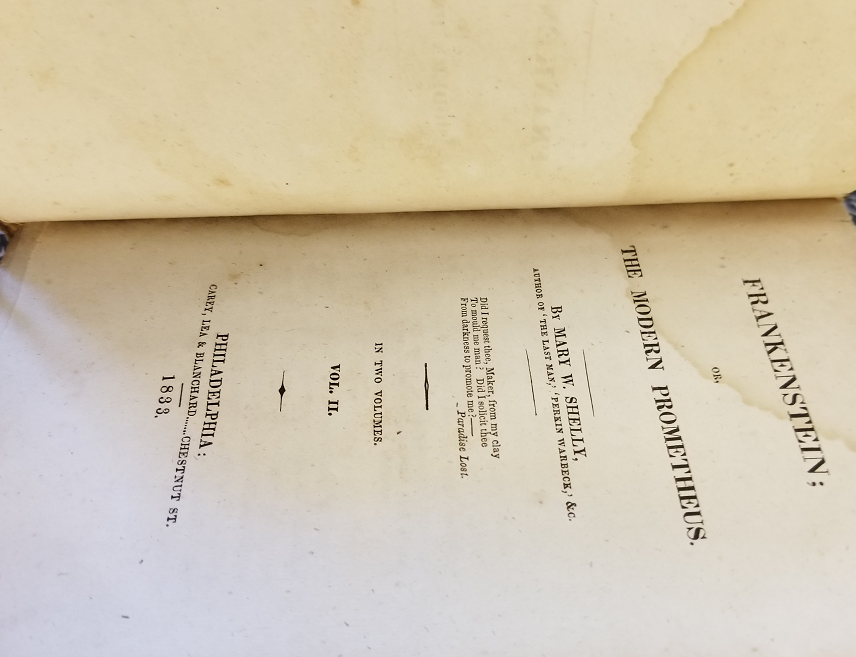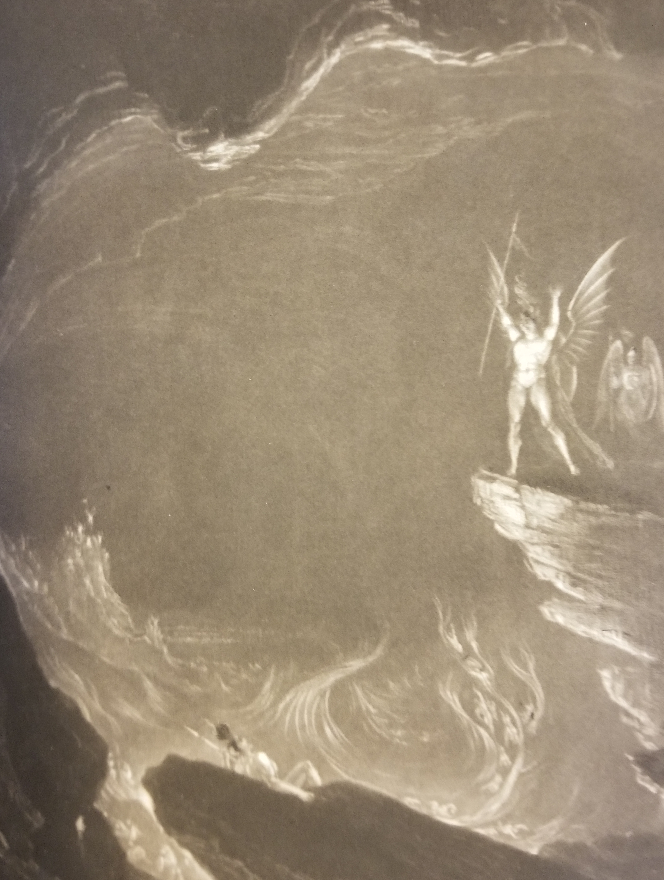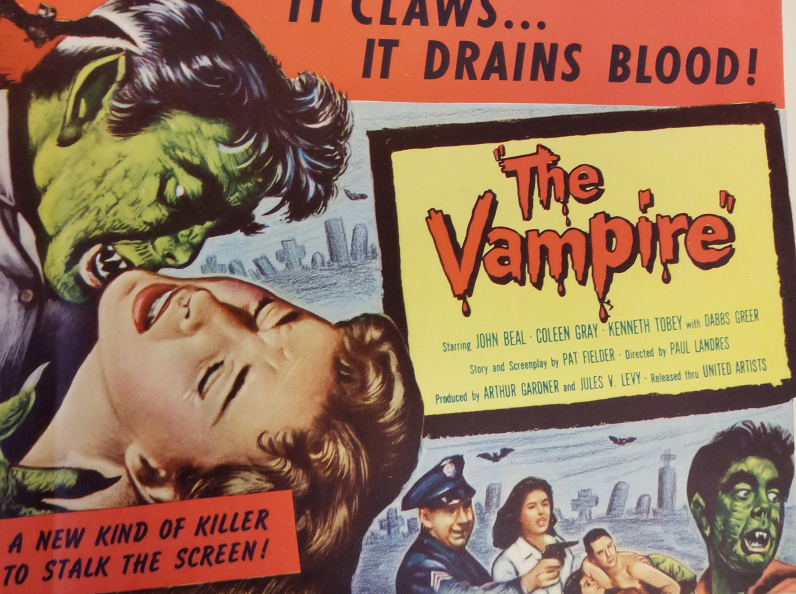 Frankenstein; or, The Modern Prometheus. Mary
Frankenstein; or, The Modern Prometheus. Mary
Wollstonecraft Shelley, 1797-1851
(Philadelphia, 1833) (Rare Book PR5397 .F7 1833)This year is the 200th anniversary of the release of Mary Shelley’s classic Frankenstein; or, The Modern Prometheus. On October 31st Swem Library will be holding a collective reading of the novel, and as the current exhibits apprentice in Special Collections, I was asked to prepare an accompanying exhibit for display. In the Resurrection of Frankenstein, I wanted to display the enduring influence of Shelley’s compelling story.
In the year 1816, winter never ended. Across Europe and North America the frosts remained, the crops floundered, and a dense fog covered the sky. In the middle of this dreary, eerie summer that never was, three of the most famous British writers of the nineteenth century gathered at a lakeside Swiss villa to ride out the weather. George Gordon Byron, Mary Shelley, and Percy Bysshe Shelley, the authors, decided to write ghost stories to pass the time.
Mary Shelley’s story came to her in a dream: she “saw the pale student of unhallowed arts kneeling beside
 Paradise Lost. John Milton, 1608-1674 (New York, 1853)
Paradise Lost. John Milton, 1608-1674 (New York, 1853)
(Rare Book PR3560 1853 Tucker-Coleman)the thing he had put together…the hideous phantasm of a man.” That dream would become Frankenstein; or, The Modern Prometheus, and that man would become Frankenstein’s monster. In the Resurrection of Frankenstein, the lasting legacy of her work comes to life through William & Mary’s own collections.
The exhibit exclusively features items from Special Collections, whose assortment of Frankenstein-related material ranges from the turn of the 19th century to the modern day. An 1833 edition of the novel--the first to be published in the United States--serves to demonstrate the novel’s contemporary popularity at the time of its initial release, while an 1853 illustrated copy of John Milton’s Paradise Lost (which Frankenstein reads in Shelley’s novel) provides a glimpse into Shelley’s sources and influences.
In my research for this exhibit, I learned that another famous horror tale also came out of that serendipitous meeting in 1816: Bram Stoker’s Dracula, which was based on The Vampyre, a novel by Byron’s physician, John Polidori, and drawn from Byron’s unfinished ghost story. In addition, I discovered that Special Collections has an early print of Polidori’s work as well. As such, the display also features ephemera related to the myth of the vampire.
 The Vampire, United Artists, 1957 in the Diane E. Clark Movie
The Vampire, United Artists, 1957 in the Diane E. Clark Movie
Poster Collection (MS 00081)More modern, twentieth-century interpretations of these monsters are also showcased. The Vampire, a 1957 film, has a unique take on the concept in which the disease of vampirism is spread via a pill, rather than through a bite. Meanwhile, the pop-out book, Edward Gorey’s Dracula: A Toy Theatre, showcases the eerie black and white artwork behind Gorey’s renowned 1977 Broadway production of the story.
In the year 1817, winter did end, at least in most of the world. Soon enough, the terrible Year Without a Summer, as it became known, faded into obscurity. But a horrific creature was brought to life that year: Frankenstein’s stitched-together monster has endured the test of time. Its companion, the vampire, remains popular to this day as well. In this Halloween season, on the 200th anniversary of Shelley’s groundbreaking contribution to the horror genre, the Resurrection of Frankenstein puts her work on display. The exhibit runs from October 17 through November 6, 2018 in the Entrance Gallery of Swem Library.
Written by Henry Prown, Exhibits Apprentice and PhD Candidate in American Studies.